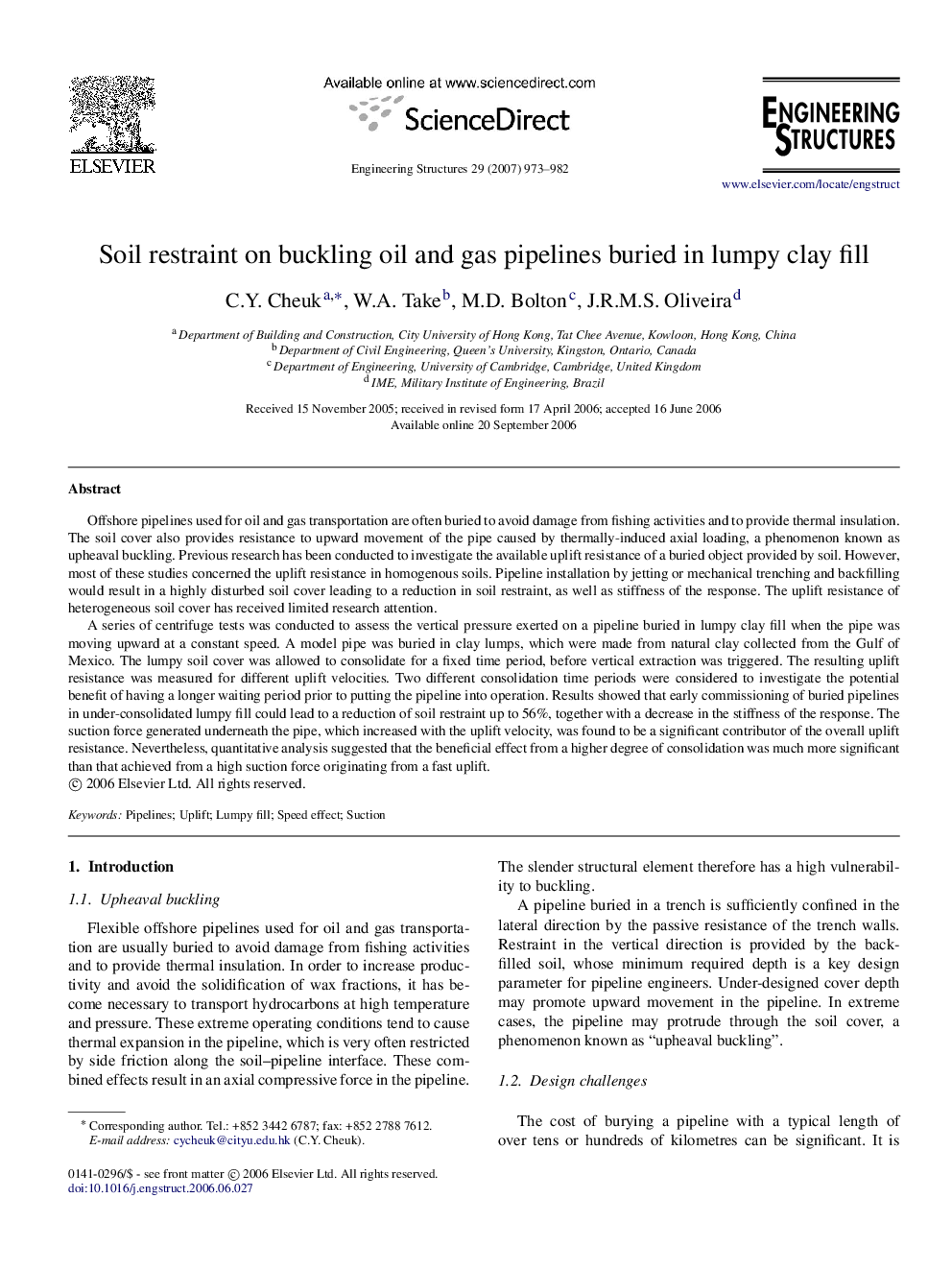| کد مقاله | کد نشریه | سال انتشار | مقاله انگلیسی | نسخه تمام متن |
|---|---|---|---|---|
| 269522 | 504485 | 2007 | 10 صفحه PDF | دانلود رایگان |

Offshore pipelines used for oil and gas transportation are often buried to avoid damage from fishing activities and to provide thermal insulation. The soil cover also provides resistance to upward movement of the pipe caused by thermally-induced axial loading, a phenomenon known as upheaval buckling. Previous research has been conducted to investigate the available uplift resistance of a buried object provided by soil. However, most of these studies concerned the uplift resistance in homogenous soils. Pipeline installation by jetting or mechanical trenching and backfilling would result in a highly disturbed soil cover leading to a reduction in soil restraint, as well as stiffness of the response. The uplift resistance of heterogeneous soil cover has received limited research attention.A series of centrifuge tests was conducted to assess the vertical pressure exerted on a pipeline buried in lumpy clay fill when the pipe was moving upward at a constant speed. A model pipe was buried in clay lumps, which were made from natural clay collected from the Gulf of Mexico. The lumpy soil cover was allowed to consolidate for a fixed time period, before vertical extraction was triggered. The resulting uplift resistance was measured for different uplift velocities. Two different consolidation time periods were considered to investigate the potential benefit of having a longer waiting period prior to putting the pipeline into operation. Results showed that early commissioning of buried pipelines in under-consolidated lumpy fill could lead to a reduction of soil restraint up to 56%, together with a decrease in the stiffness of the response. The suction force generated underneath the pipe, which increased with the uplift velocity, was found to be a significant contributor of the overall uplift resistance. Nevertheless, quantitative analysis suggested that the beneficial effect from a higher degree of consolidation was much more significant than that achieved from a high suction force originating from a fast uplift.
Journal: Engineering Structures - Volume 29, Issue 6, June 2007, Pages 973–982